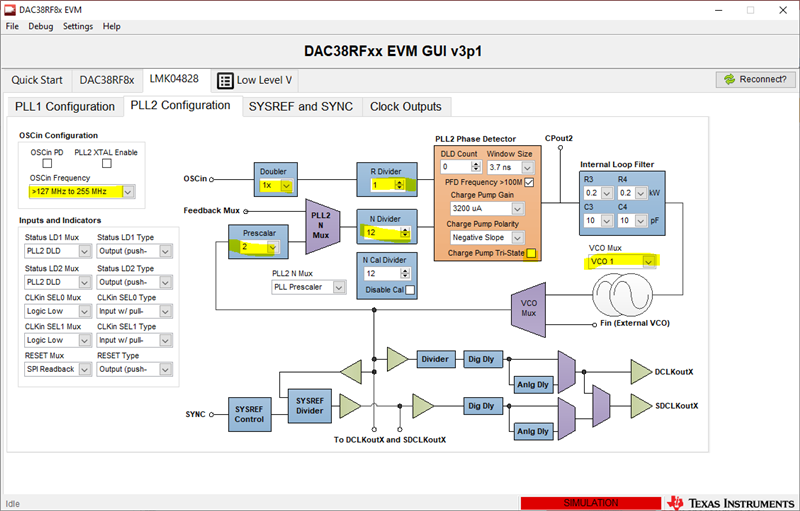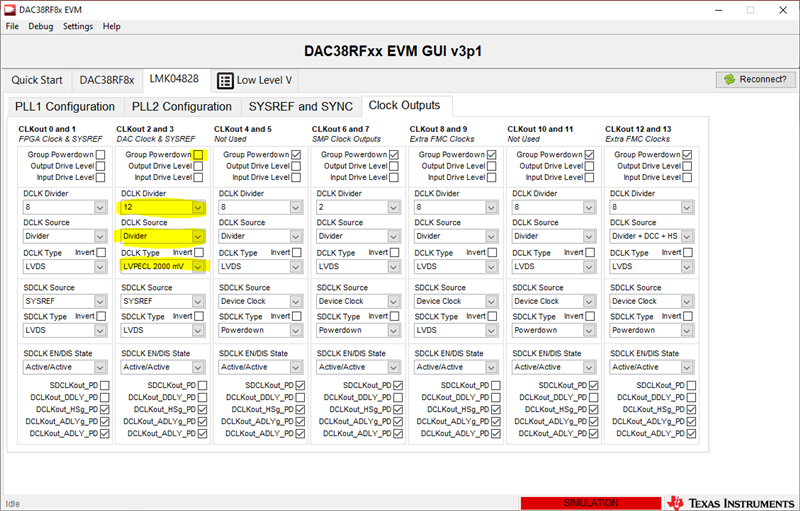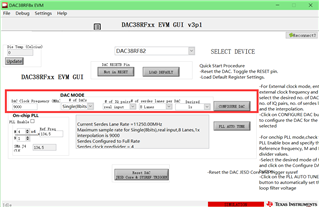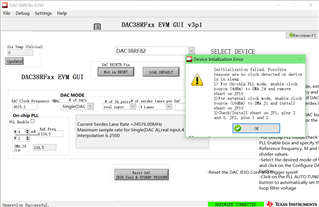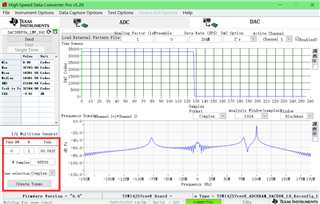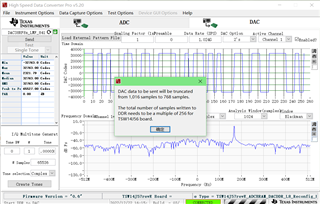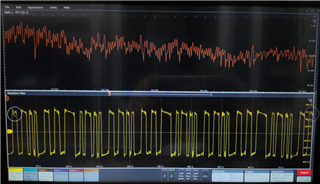Other Parts Discussed in Thread: LMK04828, TSW14J57EVM, DAC38RF82
Hello!
Is the hardware setting of "on-board VCXO clock mode" On DAC38RF82EVM like this?
I used jumper caps to connect pins 2 and 3 of JP1、 pins 1 and 2 of JP2、 pins 1 and 2 of JP3, but not pins 1 and 2 of JP10.
However, after clicking "Not in RESET" and "LOAD DEFAULAT" of the software DAC38RF8xEVM GUI, it shows that " Initiialization failed. Possible reasons are no clock detected or device is in sleep.1)For On-chip PLL mode, enable clock source (4dBm)to SMAJ4 and remove shunt on JP10;2)For external clock mode ,enable clock source (16dBm)to SMA J1 and install shunt on JP10;3)Check/ Install shunt on JP1,pins 2and 3,JP2,pins 1 and 2, How to solve it?.


